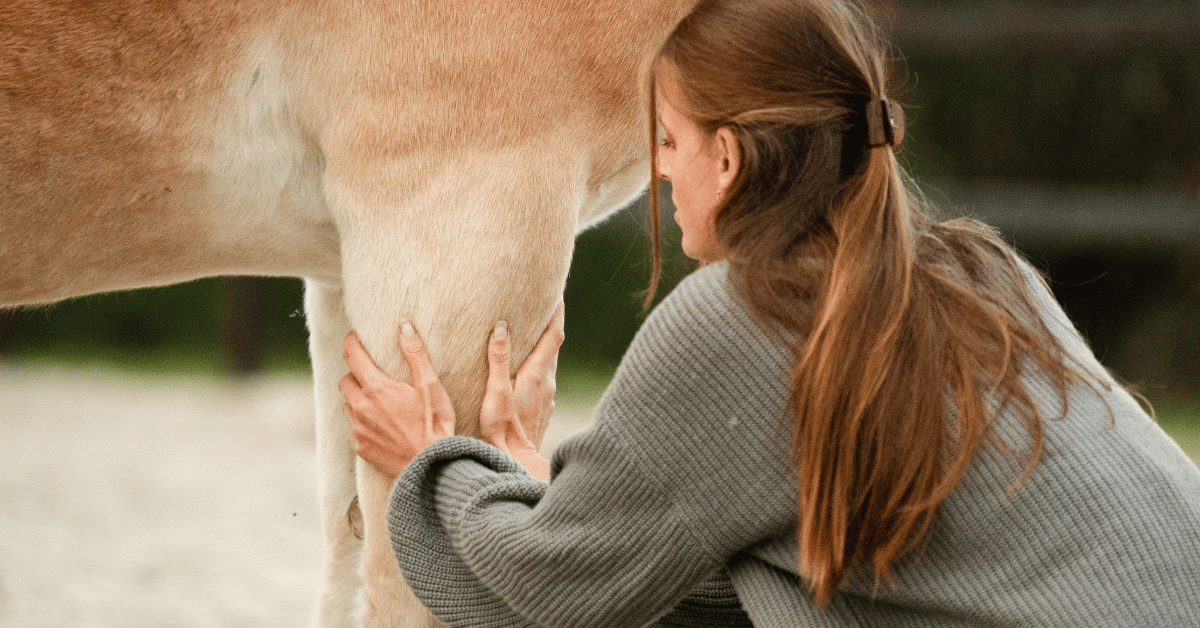Guest Blog Puur Maddy: Support an Optimal Lymphatic System
Autumn is in full swing, which means as a lymph drainage therapist, you might notice more “autumn ailments.” Laminitis from lush autumn grass, filled legs because horses move less… In addition to my work at HELTIE, I, Madeleine, also work as a lymph drainage therapist (Puur Maddy). Every day I see how vital the lymphatic system is for your horse’s health and recovery. It’s often overlooked, yet it plays a key role in removing waste products, supporting the immune system, and aiding recovery after injuries. In this blog, I’ll explain what the lymphatic system does and how Manual Lymphatic Drainage (MLD) can help your horse.
Guest blog
Lymphatic system

9 October '25 • 2 min reading time
What is the lymphatic system?
The lymphatic system consists of lymph nodes, vessels, glands, and lymph fluid. It’s as extensive as the circulatory system, running throughout the body—superficially under the skin and deeper around the organs and legs. It directly affects multiple organ systems and supports the immune system.
Circulatory System vs. Lymphatic System
The circulatory system is a “closed system” powered by the heart, pushing fluid into the tissues. The lymphatic system, however, is “open,” and lymph flow is mainly stimulated by tissue movement, relaxation, and breathing. Even the hoof mechanism helps pump lymph upward. A well-functioning lymphatic system can drain up to 20 liters of fluid per day, compared to only 2–5 liters at rest.
What does the lymphatic system do?
It transports fluid, waste products, damaged cells, and pathogens to the lymph nodes, where they’re filtered before returning to the bloodstream. Horses have around 8,000 lymph nodes that work closely with the immune system. This drainage process allows tissue recovery after injuries or wounds.
The lymphatic system is linked to the autonomic nervous system. Only when a horse is relaxed and in a parasympathetic (rest and recovery) state can the lymphatic system function optimally.
Why movement matters
Movement stimulates lymph flow by promoting fluid absorption and waste removal. This is essential for recovery from daily cellular wear, injuries, and wounds. A well-functioning lymphatic system supports faster recovery, less stiffness, and stronger immunity.
What is MLD?
Manual Lymphatic Drainage (MLD) is a gentle, relaxing massage technique that stimulates the superficial lymph vessels and creates a suction effect on deeper ones. The therapist considers the whole picture—nutrition, housing, and condition—to make the treatment as effective as possible. MLD is not just a massage; it uses specific techniques tailored to each horse’s body and needs.
The threefold effect of MLD:
- Increases waste removal
- Promotes recovery
- Strengthens overall resistance
MLD works on both physical and mental levels. Horses relax, release tension, and often become more trusting—especially those with trauma, stress, or negative touch experiences.
When to use MLD
MLD can help with:
- Injuries and recovery
- Wound healing
- Filled legs or fluid retention
- Low immunity or poor condition
- Stress, trauma, or mental tension
- Preventive support for the lymphatic system
- Mud fever
- Laminitis
- CPL (Chronic Progressive Lymphedema)
- Tendon issues
In summary
The lymphatic system is powerful yet often underestimated. MLD supports this system by speeding up waste removal, promoting relaxation, and boosting overall health and immunity. You can find certified lymph drainage therapists at mldregister.nl
✅ Contact Madeleine if you think MLD could benefit your horse.
✅ Learn more or book an appointment: www.puurmaddy.nl
Email: madeleine@puurmaddy.nl
Instagram: @puurmaddy.nl
.png)


